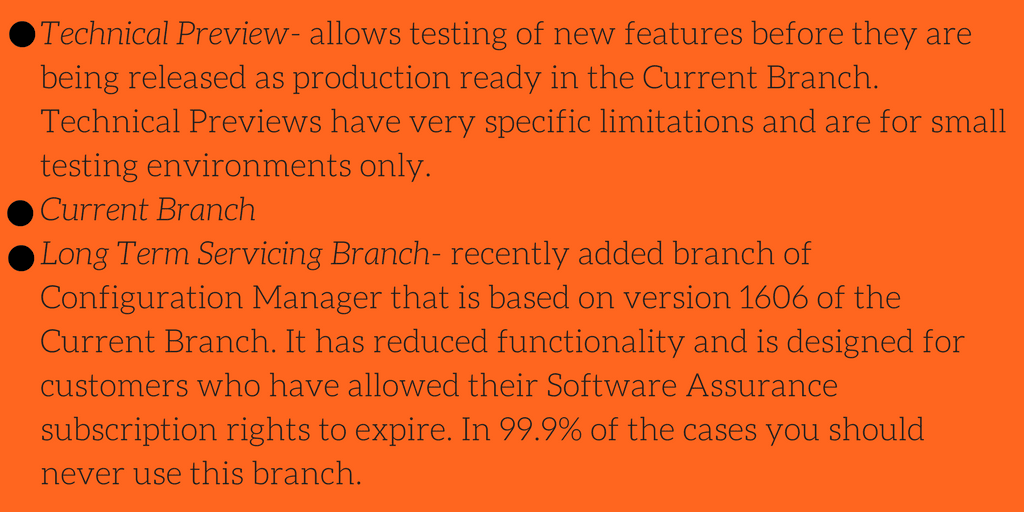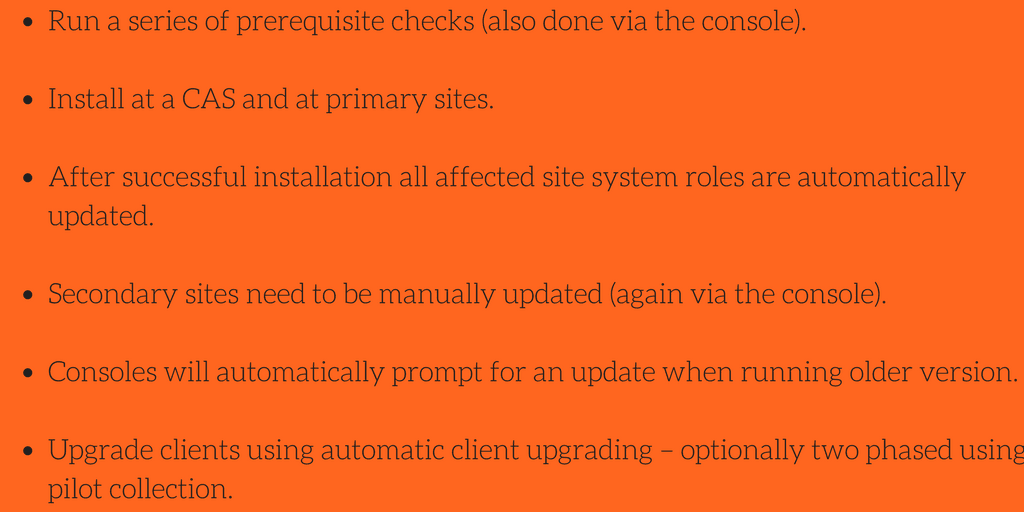If you can recall the days of lifecycle management in 2007 and 2012, Configuration Manager (CM) was not always as straightforward as many CM administrators wanted it to be. Typically, after the initial implementation, (as an admin) you had to deal with hotfixes, updates, and service packs on a regular basis. Applying these was a time-consuming task and not always direct depending on the complexity of the hierarchy. Next to that, for hybrid environments, an admin also had to (potentially) cope with new Intune extensions every once and a while.
With the most recent release of Configuration Manager, Microsoft is moving towards a “Configuration Manager as a service” model. This model allows to add features and resolve issues more quickly. Together with this new model we also see a significant increase of the release cadence.
Luckily as part of this change, Microsoft has also significantly improved things on the administrative side: becoming aware of new releases and installing them is now a lot easier, less time consuming, and completely done through the Configuration Manager console. No longer does the admin need to scavenge the internet to seek for updates applicable to his environment.
With the new servicing model Microsoft has also introduced three different branches:

Based on the current experience, Microsoft is planning for three to four releases for the Current Branch in a one year period. Each release is supported for one year after the GA date. In the Technical Preview, branch releases are much more frequent as new releases have been coming every month. Releases cannot be mixed across branches.
Releases can come in two distinct versions: baseline versions and update versions. The baseline versions can be installed from media which can be obtained from various Microsoft websites. The installation experience from media is similar to the experience with prior Configuration Manager versions. The second type of releases, update versions, can only be installed using the new servicing model. These installations are done through the administration work space in the Configuration Manager console.
Next to product updates, Microsoft is also releasing hotfixes through the new servicing model. Hotfixes applicable to a specific environment are also listed in the servicing node in the console and can be installed through a few simple clicks.
To become aware of new update versions or hotfixes, a new critical component is required in the Configuration Manager hierarchy: the service connection point. This role can either be installed locally on the site server or on a remote site system. It can be configured in online or in offline mode. In online mode, there is an automatic check every 24 hours. If a new update is available, it is downloaded and displayed in the servicing node in the console. In offline mode, there is no connection to the Microsoft Cloud service and a utility called the Service Connection Tool must be run manually to import new updates into the infrastructure.
Installing updates through the new servicing model is very easy and takes significantly less time then what Configuration Manager administrators are used to when upgrading previous version of CM. Upgrading your CM infrastructure usually involves the following high level steps:
In the past 12+ months I have been guiding many customers to renovate their infrastructure to Current Branch as well as designing brand new hierarchies. Once upgraded, many customers agree this new servicing model is an incredible step forward.
Based on my experience, the biggest hurdle to overcome is not a technical one, but one related to existing processes which are not aligned to cope with the fast release cadence of the product. Once processes are updated and aligned, customers pick up the pace and tend to implement new releases quickly in order to benefit from the latest and newest features.

If you are interested, as I know you are, in getting the most out of CM this year, I urge you to register for this webinar coming up on the 25th. In this session, two Microsoft MVPs – Kent Agerlund of Coretech and 1E’s own Mike Terrill – will discuss:
- The 2016 highlights
- What to look out for to help you with your planning
- Recommendations to make 2017 a success for Configuration Manager deployments
If you have not upgraded your infrastructure yet – I encourage you to start planning the upgrade as soon as possible and start benefiting from the new servicing model and all the great features coming with it!




